The Large Hadron Collider with my own eyes
Most, of course, are aware of the existence of the Large Hadron Collider and have seen his photos, but I think that the probability of looking at it with my own eyes for an ordinary person is less than the probability of the Higgs boson appearing at this very collider. Therefore, when a small note appeared in the summer on elements.ru that CERN (Center for European Nuclear Research) at the end of September spends an open day, I had no doubt - we must go.
A special feature of all this is that CERN is not a museum, but working laboratories and what they show is real scientific installations.
It turned out, however, that one can freely visit only those places that are on the surface of the earth, and the collider, as everyone knows, is deep underground. For visitors, CERN chose several points in the collider for which it was possible to take a nominal ticket (free of charge) on a special site and the number of these tickets was strictly limited. Moreover, one person was allowed to take only one ticket. I will not go into details as I monitored their website for the appearance of tickets - as I later understood the tickets appeared at random intervals (which in general is fair, because it gave everyone a chance to get a ticket). In the end, I got a visit to the CMS - Compact Muon Solenoid - one of the two detectors, on which the Higgs boson was discovered (the second detector is the Atlas).
Compact Muon Solenoid is the world's largest solenoid, in which a magnetic field is created and the decay of charged particles, mainly muons, is investigated. My journey to this detector began with a bus ride to point 5 - where this device is located. It must be said that the length of the collider's circumference is 27 kilometers in France and Switzerland and it is not an easy task to move between different points. Fortunately, the organizers started free buses between all interesting places and I arrived there on such a bus. The building itself on the surface is a fairly large building with a gate.
')

This photo shows what is inside the building.
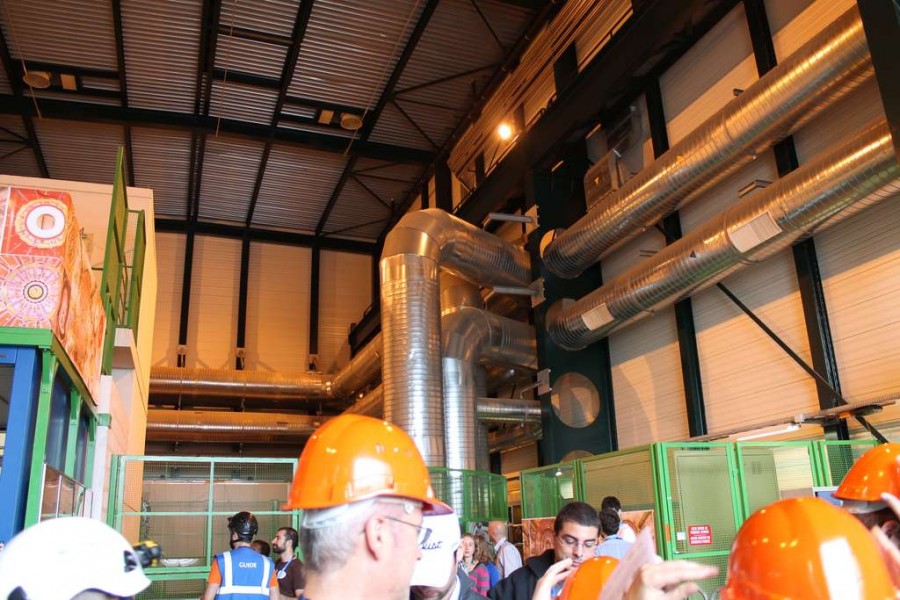
I must say that visitors must register for their ticket and get a badge. In front of the gates, people are divided into groups of 15 people and single out one guide from among local employees. Our group got a young American graduate student working at the collider. They take away all the bags and issue helmets. This is me, ready todive down.
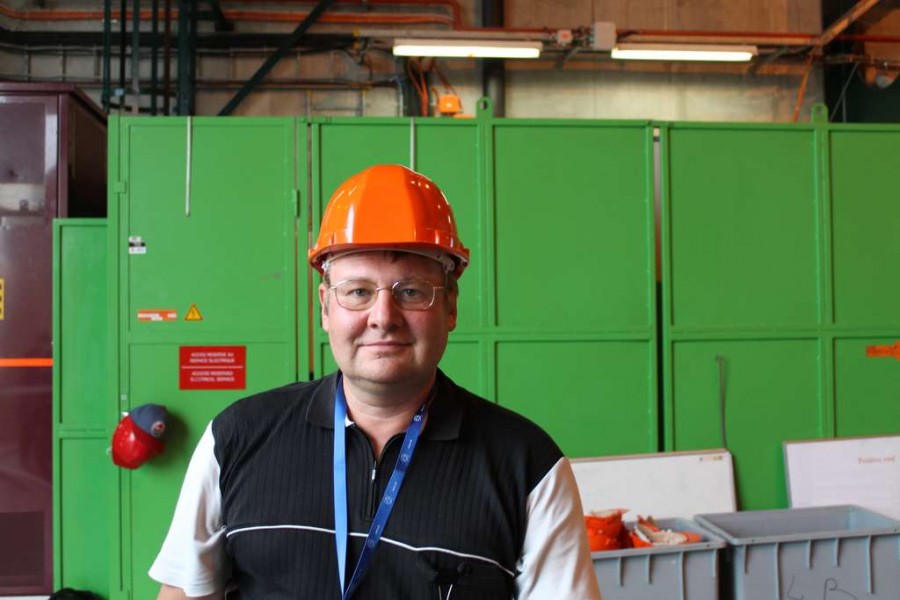
Before going underground, our graduate student talks about what a CMS is and what it is for. People carefully listen to the story about the muons and the magnetic field.

Further, the graduate student says that the detector was built by a group of countries, of which a certain amount of money was contributed. Except Russia. Russia turned out to be the smartest, smartest and got its place for scintillation crystals, which were previously used in some kind of military program, and then they wanted to be thrown away, but not thrown away, but given to CERN. After the story, which made me proud of my Motherland, our guide gave a brief safety briefing, which was that everything would be fine, and even if we were stuck in an elevator, we would be quickly pulled out.
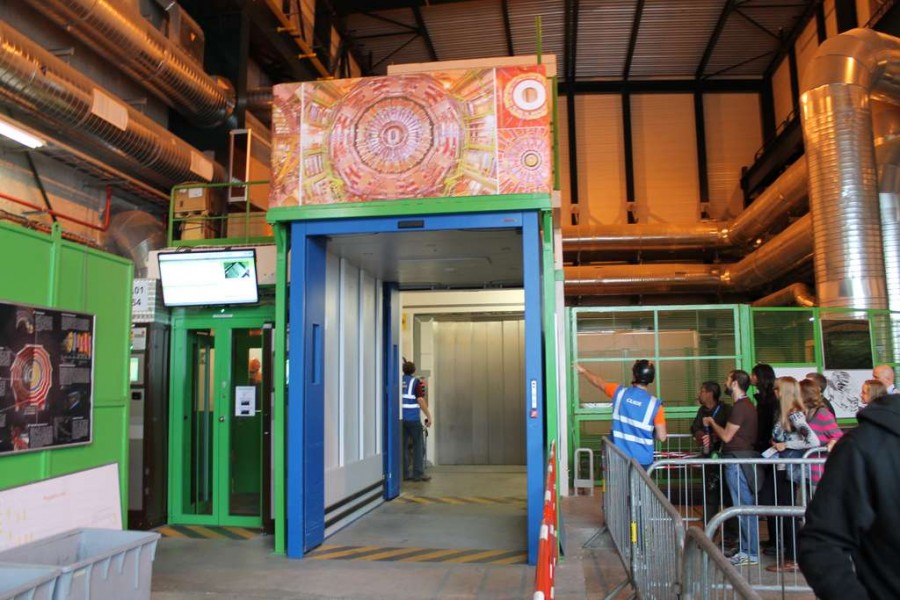
People imbued.

Finally we go to the elevator:

And stuffed into it like a herring in a barrel.

After a short descent, in which everyone had ears, we find ourselves at a depth of about 100 meters. The elevator doors open and we find ourselves in half-life:

We walk along a long underground corridor:

And suddenly…
The corridor ends abruptly and we find ourselves in a huge hall the height of a five-story house and a huge cylinder in the middle. It is impossible to describe in words this sight. Perhaps even the photos do not convey the grandeur of the building!

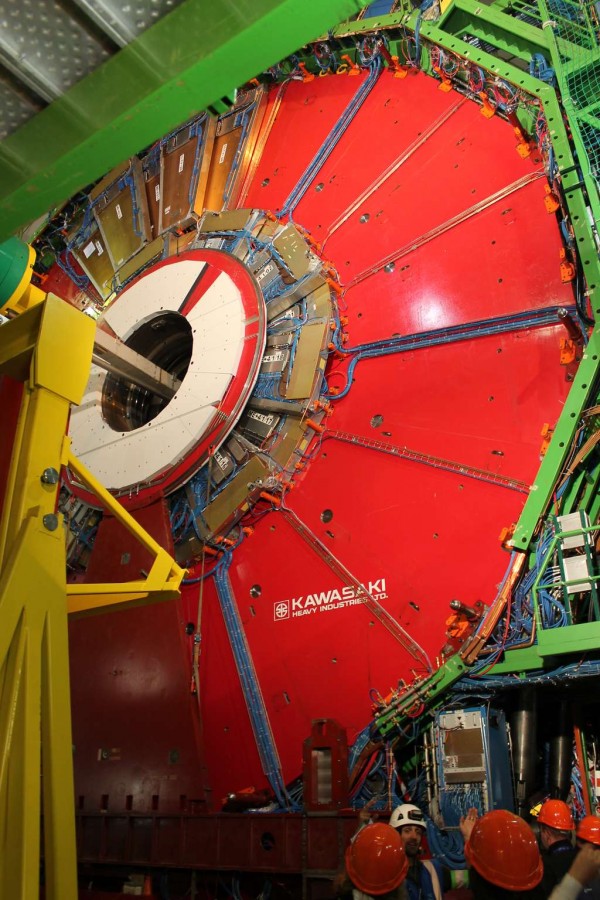
Thousands of wires are wrapped around the cylinder. As our guide said, there are millions of measuring channels in this detector, and the energy stored by the magnetic field is enough to melt ten tons of gold.
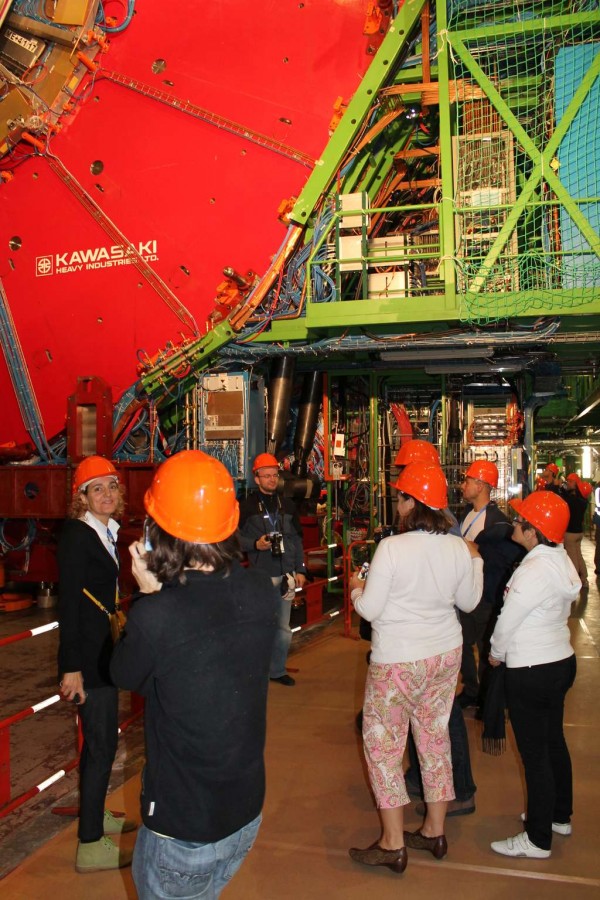


The grandeur of the building causes respect and delight for the possibilities of human genius.



Our guide explains something to enchanted guests.
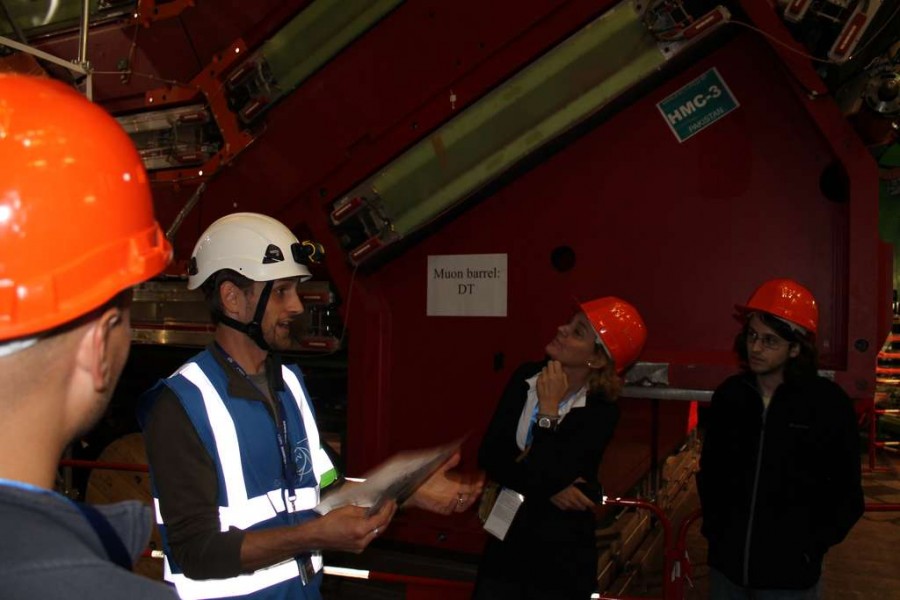
And there we have that device.

It is evident that there are several floors.

I wonder how local engineers deal with all these wires?

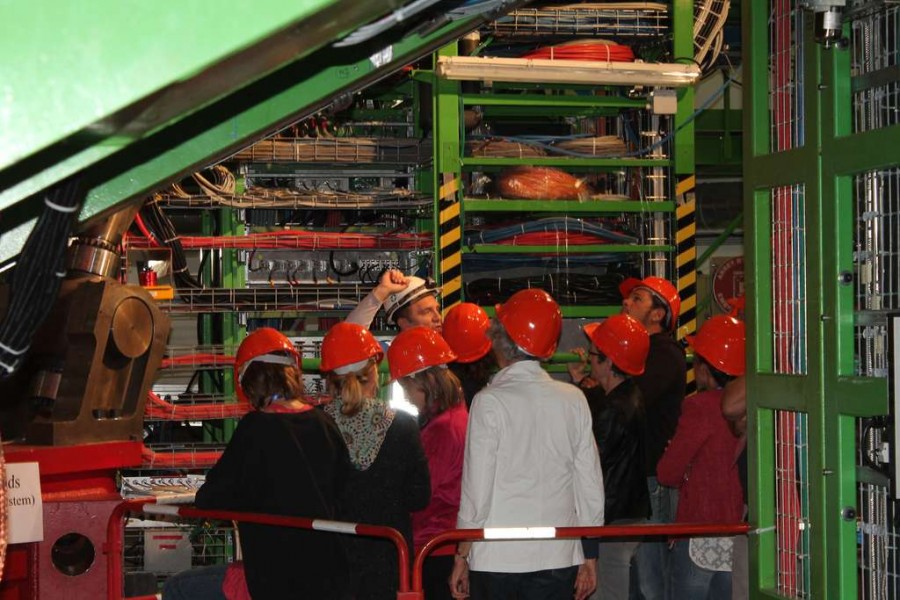
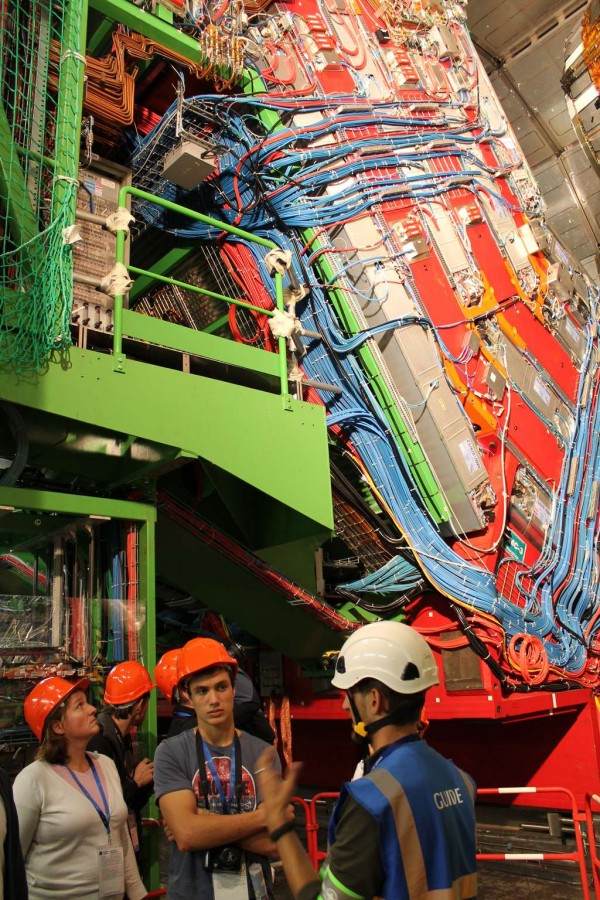
Gradually we move along the detector.
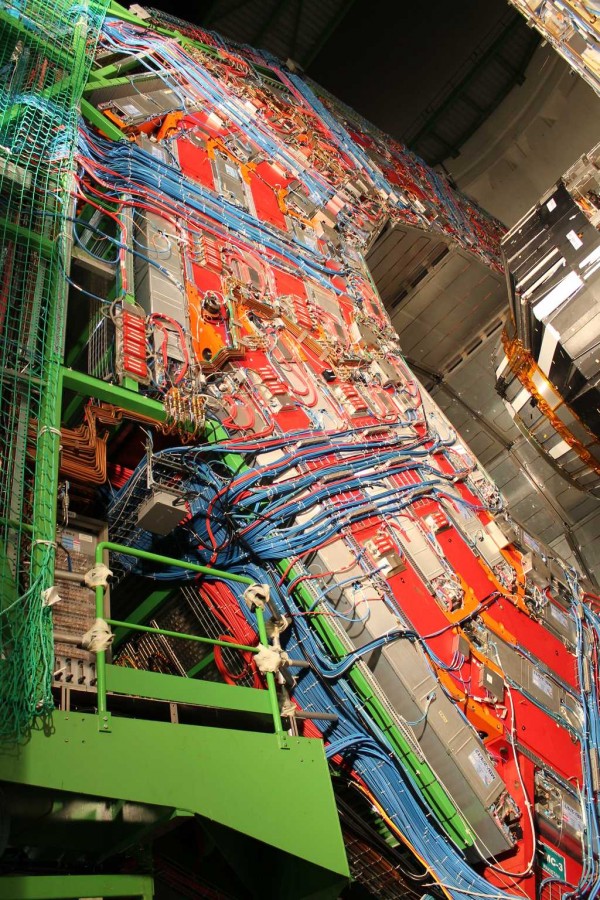


Details are visible in close-up.



Finally, the detector ends and we go up the stairs.
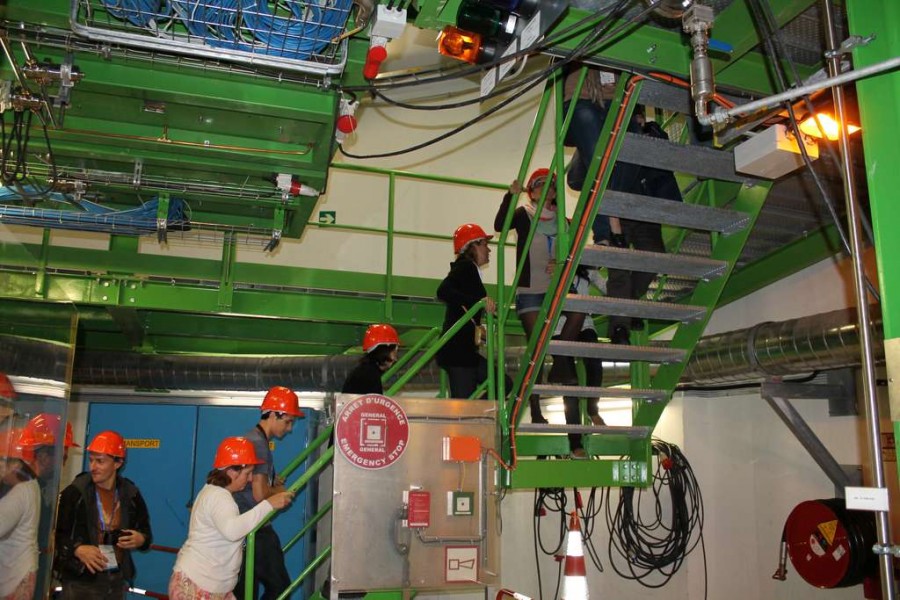
Self-portrait on the background of the detector.
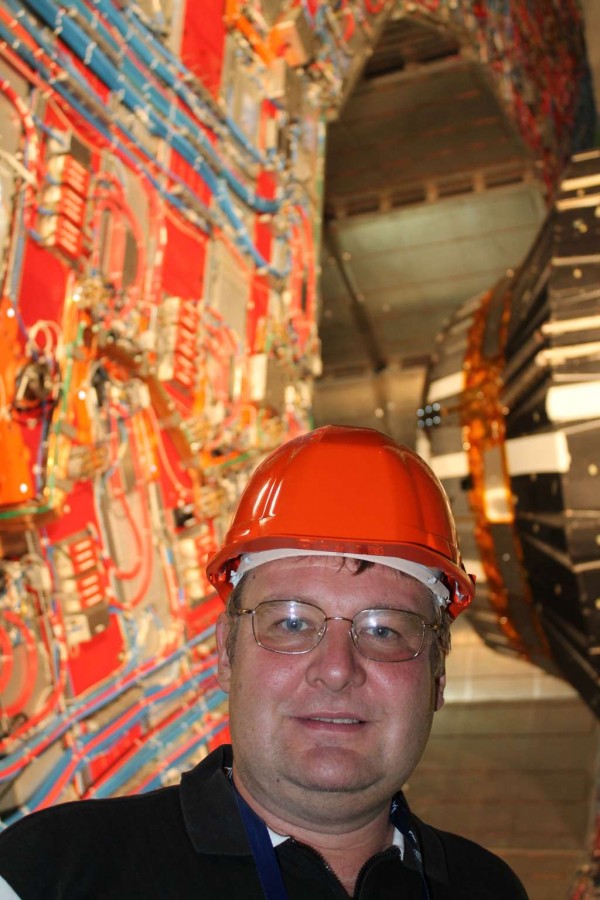
Second floor.
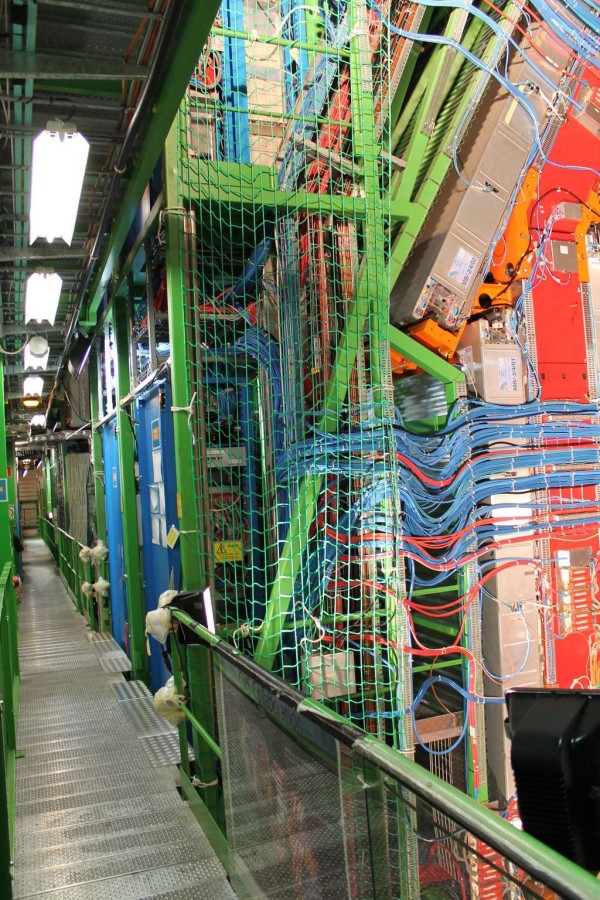
Again we fall into the corridor.
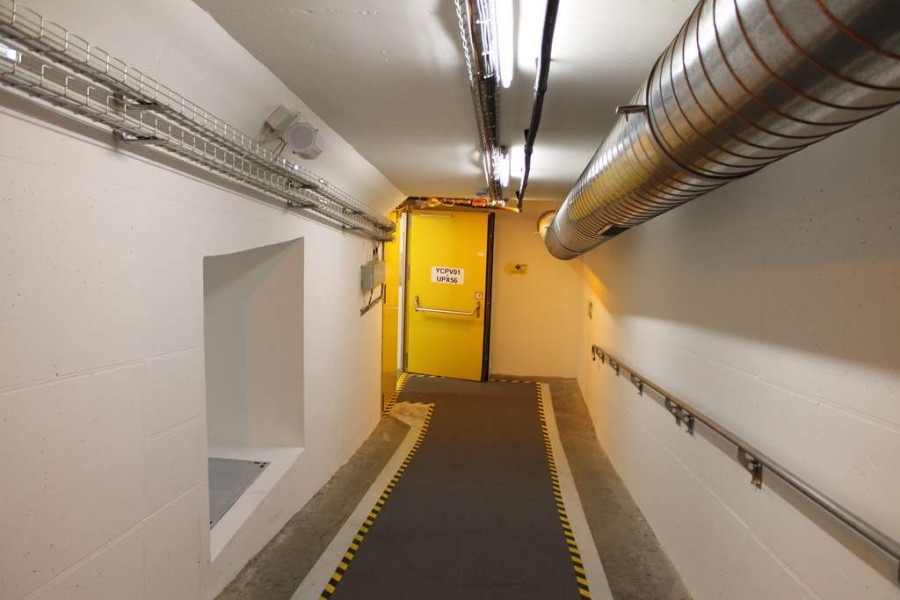
Here is ateleport to another dimension of the tricky gateway. In order to pass through it, you need to look at such a thing, which is at the level of the head.
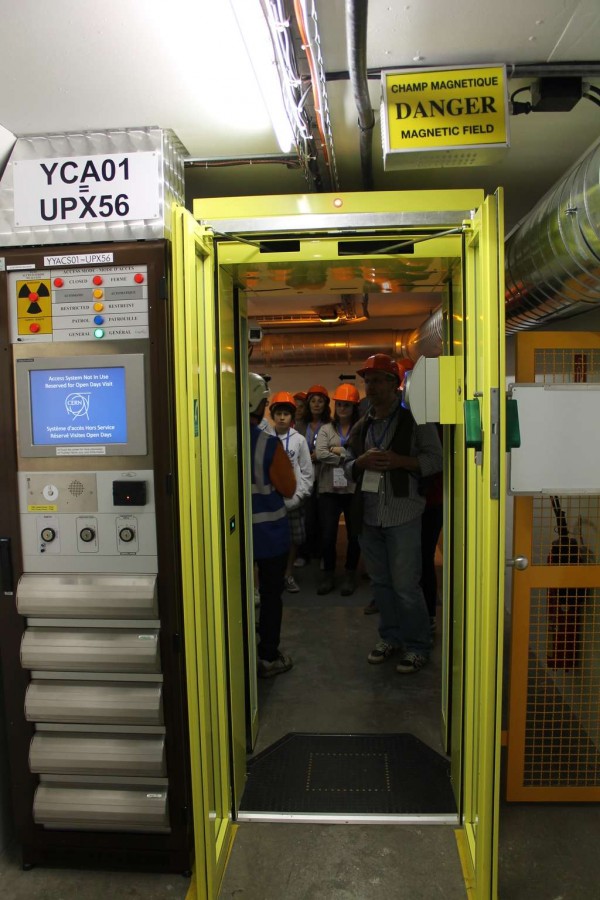
But today it does not work.

various signs hang on the wall. Particularly impressive is the sign hanging under the red lamp.
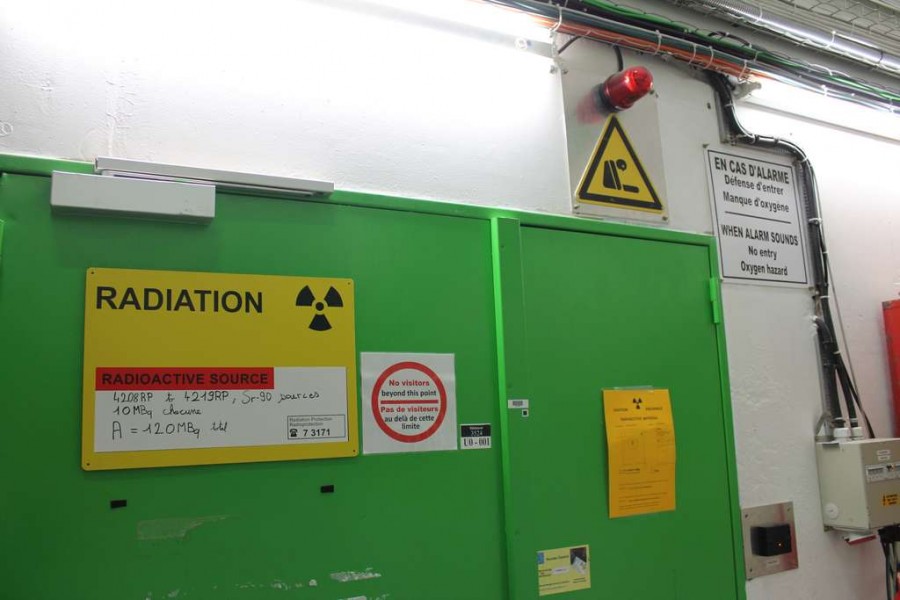
We get to the computer center. Of course, this is a small computing center that is used for preliminary processing and storage of information.
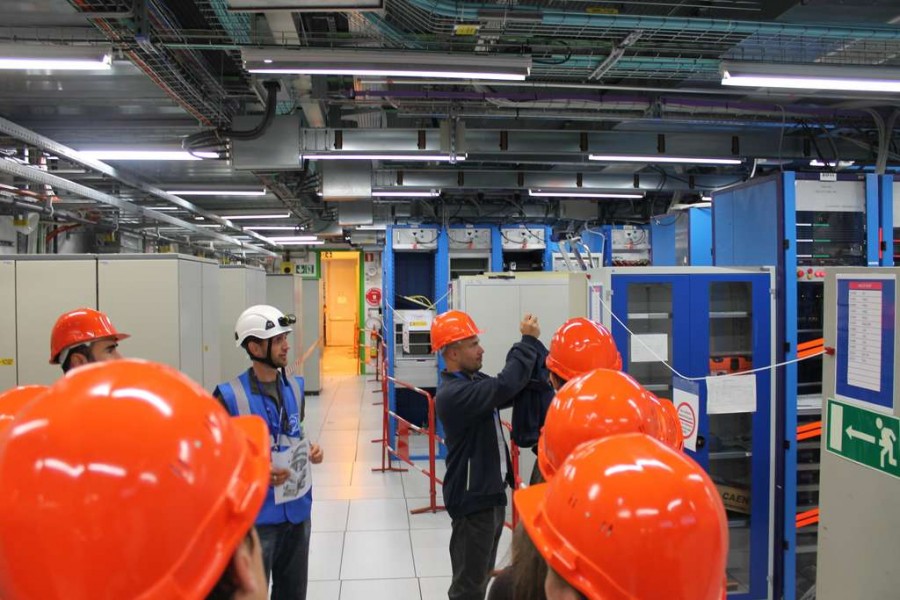
Visible rack with equipment.
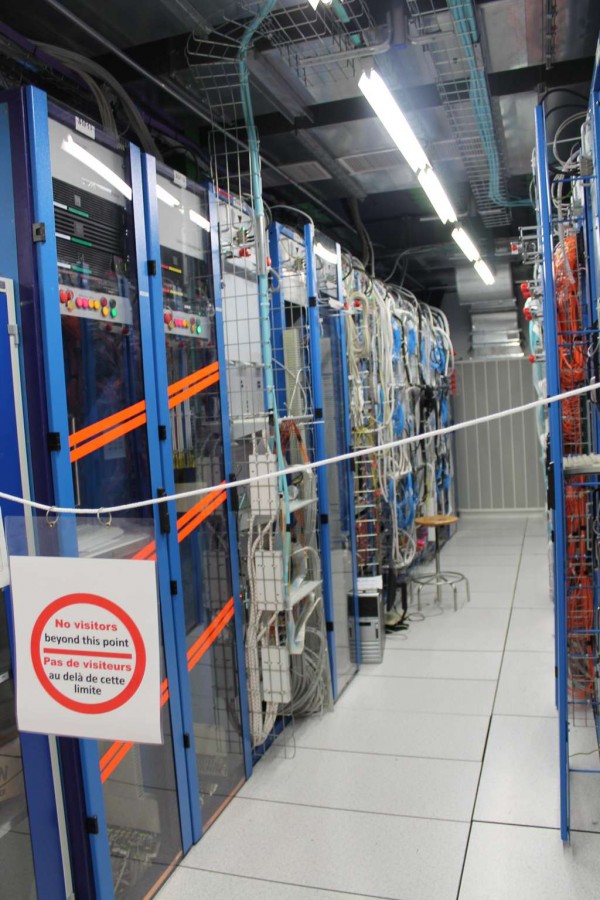
Next is the mine, which is delivered equipment.
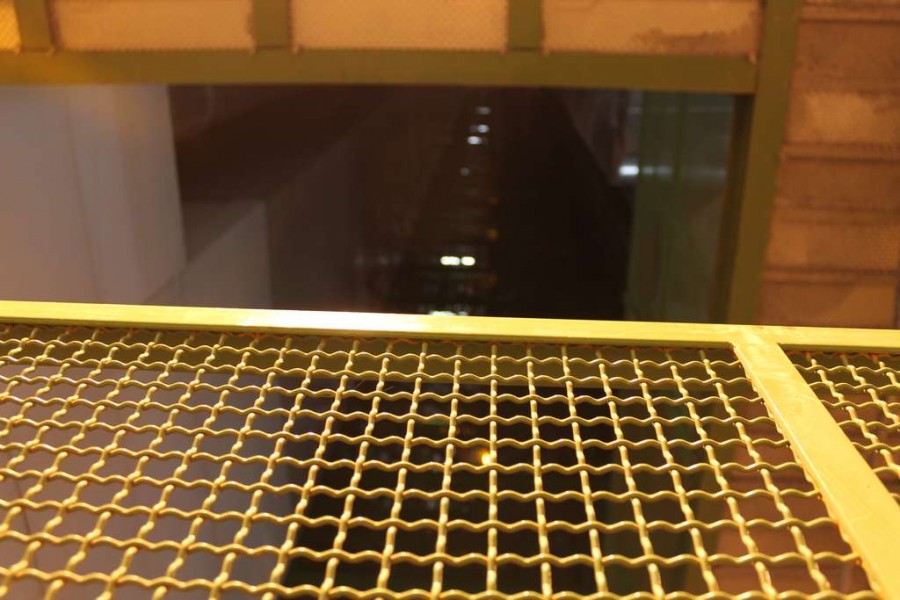
Finally, our guide tells the story of the creation of this detector.

All go to the elevator and go upstairs.
As you know, all this is created in order to know nature and an attempt to describe using as few as possible equations. And this is what led to today: all our current knowledge is written in the form of the Lagrangian of the standard model on this stone. Need to add only gravity?
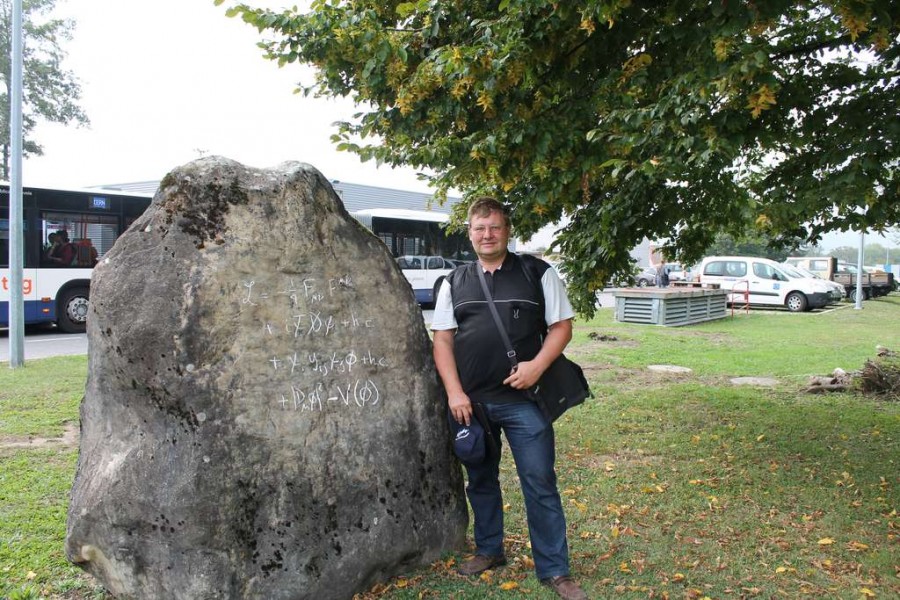
If this topic is of interest, I can also tell you about the control center of the collider and the main computing center.
A special feature of all this is that CERN is not a museum, but working laboratories and what they show is real scientific installations.
It turned out, however, that one can freely visit only those places that are on the surface of the earth, and the collider, as everyone knows, is deep underground. For visitors, CERN chose several points in the collider for which it was possible to take a nominal ticket (free of charge) on a special site and the number of these tickets was strictly limited. Moreover, one person was allowed to take only one ticket. I will not go into details as I monitored their website for the appearance of tickets - as I later understood the tickets appeared at random intervals (which in general is fair, because it gave everyone a chance to get a ticket). In the end, I got a visit to the CMS - Compact Muon Solenoid - one of the two detectors, on which the Higgs boson was discovered (the second detector is the Atlas).
Compact Muon Solenoid is the world's largest solenoid, in which a magnetic field is created and the decay of charged particles, mainly muons, is investigated. My journey to this detector began with a bus ride to point 5 - where this device is located. It must be said that the length of the collider's circumference is 27 kilometers in France and Switzerland and it is not an easy task to move between different points. Fortunately, the organizers started free buses between all interesting places and I arrived there on such a bus. The building itself on the surface is a fairly large building with a gate.
')

This photo shows what is inside the building.

I must say that visitors must register for their ticket and get a badge. In front of the gates, people are divided into groups of 15 people and single out one guide from among local employees. Our group got a young American graduate student working at the collider. They take away all the bags and issue helmets. This is me, ready to

Before going underground, our graduate student talks about what a CMS is and what it is for. People carefully listen to the story about the muons and the magnetic field.

Further, the graduate student says that the detector was built by a group of countries, of which a certain amount of money was contributed. Except Russia. Russia turned out to be the smartest, smartest and got its place for scintillation crystals, which were previously used in some kind of military program, and then they wanted to be thrown away, but not thrown away, but given to CERN. After the story, which made me proud of my Motherland, our guide gave a brief safety briefing, which was that everything would be fine, and even if we were stuck in an elevator, we would be quickly pulled out.

People imbued.

Finally we go to the elevator:

And stuffed into it like a herring in a barrel.

After a short descent, in which everyone had ears, we find ourselves at a depth of about 100 meters. The elevator doors open and we find ourselves in half-life:

We walk along a long underground corridor:

And suddenly…
The corridor ends abruptly and we find ourselves in a huge hall the height of a five-story house and a huge cylinder in the middle. It is impossible to describe in words this sight. Perhaps even the photos do not convey the grandeur of the building!


Thousands of wires are wrapped around the cylinder. As our guide said, there are millions of measuring channels in this detector, and the energy stored by the magnetic field is enough to melt ten tons of gold.



The grandeur of the building causes respect and delight for the possibilities of human genius.



Our guide explains something to enchanted guests.

And there we have that device.

It is evident that there are several floors.

I wonder how local engineers deal with all these wires?



Gradually we move along the detector.



Details are visible in close-up.



Finally, the detector ends and we go up the stairs.

Self-portrait on the background of the detector.

Second floor.

Again we fall into the corridor.

Here is a

But today it does not work.

various signs hang on the wall. Particularly impressive is the sign hanging under the red lamp.

We get to the computer center. Of course, this is a small computing center that is used for preliminary processing and storage of information.

Visible rack with equipment.

Next is the mine, which is delivered equipment.

Finally, our guide tells the story of the creation of this detector.

All go to the elevator and go upstairs.
As you know, all this is created in order to know nature and an attempt to describe using as few as possible equations. And this is what led to today: all our current knowledge is written in the form of the Lagrangian of the standard model on this stone. Need to add only gravity?

If this topic is of interest, I can also tell you about the control center of the collider and the main computing center.
Source: https://habr.com/ru/post/196132/
All Articles